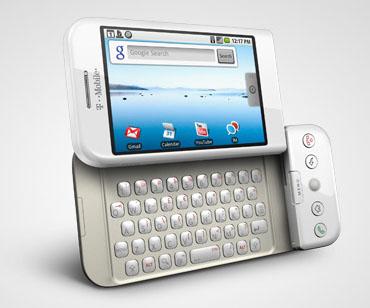To key, or not to key: that is the question. Throughout our coverage of newly released and upcoming Android devices, you all have posted a lot of comments. Topics run the gamut from style to battery life, and virtually every aspect in between has received a nod. But there is one subject that draws more comments than all of the others combined: hardware versus virtual keyboards.
Of course, personal taste has a tremendous role in determining what is best for you. However, when comparing the G1 to the myTouch 3G or Hero, there are several other factors to take into account. But first, let's briefly look at taste. Google Experience phones have the black, white and orange virtual keyboard that came with Cupcake, and Sense phones will have HTC's lovely white, black, and green QWERTY. In both cases, customization is possible; perhaps more so with the Google Experience. It's very open, and that kb is just begging to be skinned, replaced, etc., in my opinion. (cont.)

Virtual keyboards are great because you don't have to bother opening and closing your phone. And that also means fewer moving parts--parts that can break or wear. No more creaky, squeaky screen panel. It means a thinner, lighter device, and in some cases, easier typing. But if you asked me what the number one benefit of a virtual keyboard is over a hardware QWERTY, I'd say uniformity. (cont.)

I have used something like 15 to 20 G1s, and at least five of them for more than a couple of hours. What struck me about testing all of those different keyboards was the variation in quality. Now that doesn't necessarily mean the phones came out of the factory in different states, but by the time they reached my hands the experiential difference between phones was like night and day.
I should point out that several of those devices were refurbished; someone had damaged the phones or was unhappy with their condition when received and they decided to return them. Therefore, my observations do not necessarily evidence unusual build quality anomalies. So does this indicate that the G1's keyboard is easily damaged or just that some people are really careless with their phones? I don't know. What I do know is that tiny flaws can have a huge impact on satisfaction when it comes to hand-held keyboards.
The G1 keyboard comes in two flavors: silver and black. The white and bronze G1 come with the silver kb, the black, with black. On the silver model, you'll find blue letters with red symbols. On the black, white letters with blue symbols. Overall, the silver keyboard is far more difficult for me to see. When the back-light comes on, the red symbols practically disappear; in bright light, I can barely see the blue. It's maddening. The black keyboard is perfect in my mind when it comes to the color scheme, but there are other variations to consider. (cont.)


Some keyboards don't sit properly; the keys are pressed up against one or two of the edges of the holes through which they protrude, causing friction and a shoddy look and feel. The back-lighting is sketchy and inconsistent, and this problem seems worse on silver model keyboards. For instance, the bronze G1 I'm using now has a light nearly as bright as the Sun sitting under the number 6, while the rest of the keyboard is dim at best.
These issues were a contributing factor to my G1 exchange cycle, which has been resolved. But as I look around, and handle other G1s, I realize that I'm not the only one noticing inconsistencies. Some people have perfect keyboards like I did, before I bricked my G1 with hacked software. They think the G1 QWERTY is fantastic. Others have never even used what I consider to be a high-quality G1. They take a crappy board for granted. But those who have been around know the difference.
Despite it being the public release of a developer's preview, my number one complaint about the G1 is the poor quality of the keyboard. I love the design. I love the materials--at lease the ones used for the black phone. But what many see as the device's greatest strength is, to me, it's greatest weakness. So aside from the pretty colors, potential for skinning, and all the other superficial stuff that comes along with virtual keyboards, I'd have to say that their single most significant advantage--at least in the case of current Android devices--is uniformity. (cont.)
